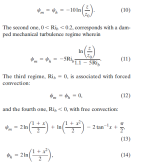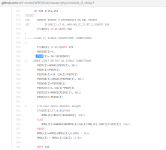momodiallosn
New member
Hi,
I have some difficulties understanding the variable PSIM defined in the registry of WRF as being the similarity function for momentum. This variable is 2D variable according to the registry. Yet, physically, the similarity function for momentum varies with height.
i1 real PSIM ij misc 1 - - "PSIM" "SIMILARITY FUNCTION FOR MOMENTUM" ""
The article of PEDRO A. JIMENEZ,* JIMY DUDHIA and al (2011) "A Revised Scheme for the WRF Surface Layer Formulation (MONTHLY WEATHER REVIEW)" gives the mathematical expression of the similarity function for momentum. In this article the similarity function for momentum varies with height.
When one compare the expression of PSIM in this article and WRF expression of PSIM in module_sf_sfclay.F they are the same yet WRF saves PSIM as a 2D variable. A screenshot of both expressions is attached to this post.
Could you please explain why PSIM does not vary with height and or which height is used to compute PSIM?
Sincerely yours
I have some difficulties understanding the variable PSIM defined in the registry of WRF as being the similarity function for momentum. This variable is 2D variable according to the registry. Yet, physically, the similarity function for momentum varies with height.
i1 real PSIM ij misc 1 - - "PSIM" "SIMILARITY FUNCTION FOR MOMENTUM" ""
The article of PEDRO A. JIMENEZ,* JIMY DUDHIA and al (2011) "A Revised Scheme for the WRF Surface Layer Formulation (MONTHLY WEATHER REVIEW)" gives the mathematical expression of the similarity function for momentum. In this article the similarity function for momentum varies with height.
When one compare the expression of PSIM in this article and WRF expression of PSIM in module_sf_sfclay.F they are the same yet WRF saves PSIM as a 2D variable. A screenshot of both expressions is attached to this post.
Could you please explain why PSIM does not vary with height and or which height is used to compute PSIM?
Sincerely yours


